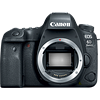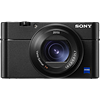Main
Model
Price
Advantages
launch
Announced
Body type
Camera subcategory
Sensor
Effective pixels
Max resolution
Sensor size
Sensor type
Processor
Image ratio w:h
Sensor photo detectors
Other resolutions
Image
ISO
Boosted ISO (minimum)
Boosted ISO (maximum)
White balance presets
Custom white balance
Image stabilization
Uncompressed format
JPEG quality levels
Photography features
Minimum shutter speed
Maximum shutter speed
Aperture priority
Shutter priority
Manual exposure mode
Subject / scene modes
Built-in flash
External flash
Continuous drive
Self-timer
Metering modes
Exposure compensation
AE Bracketing
Maximum shutter speed (electronic)
Flash range
WB Bracketing
Screen / viewfinder
Articulated LCD
Screen size
Screen dots
Touch screen
Screen type
Live view
Viewfinder type
Viewfinder coverage
Viewfinder magnification
Viewfinder resolution
Videography features
File Format
Microphone
Speaker
Optics & Focus
Autofocus
Manual focus
Number of focus points
Lens mount
Focal length multiplier
Focal length (equiv.)
Optical zoom
Maximum aperture
Digital zoom
Normal focus range
Macro focus range
Physical
Weight (inc. batteries)
Dimensions
Environmentally sealed
Battery
Battery details
Battery Life (CIPA)
Storage
Storage types
Connectivity
USB
HDMI
Microphone port
Headphone port
Wireless
Wireless notes
Remote control
Other features
Orientation sensor
Timelapse recording
GPS
Samples
Videos
Summary
The Canon EOS 6D Mark II maximum resolution of 6240 x 4160 pixels (26 megapixels) is better than the Cyber-shot DSC-RX100 V maximum resolution of 5472 x 3648 pixels (20 megapixels). The Canon EOS 6D Mark II is equipped with larger sensor than the Cyber-shot DSC-RX100 V: Full frame (35.9 x 24 mm) versus 1″ (13.2 x 8.8 mm). It is the most significant difference between these models because big sensor lets the camera owner to make pictures of the more professional quality. The Canon EOS 6D Mark II offers a wider ISO range of 100-40000 than 125-12800 ISO range of the Cyber-shot DSC-RX100 V. Such ISO range let you to make better pictures in dim light conditions. The Cyber-shot DSC-RX100 V offers more focus points than the Canon EOS 6D Mark II: 315 vs 45. More focus points means less risk of losing focus lock during following a moving object.
The Cyber-shot DSC-RX100 V display is better as it has more screen dots 1,228,800 in compare to 1,040,000 dots of the Canon EOS 6D Mark II display. The higher dot count display is better for reviewing images on your camera. The EOS 6D Mark II is produced with a touch screen. The EOS 6D Mark II provides better highest shutter speed - 1/4000 second.
The Cyber-shot DSC-RX100 V is produced with built-in flash. The EOS 6D Mark II supports external flash. An external flash provides superior control over the exposure and lighting of the object in low light or in bright light conditions when you need to fill-flash. The Canon EOS 6D Mark II battery life is better than the Cyber-shot DSC-RX100 V battery life. In accordance with CIPA standards the camera owner will be able to take 1200 photos with the EOS 6D Mark II and only 220 with the Cyber-shot DSC-RX100 V. The Cyber-shot DSC-RX100 V weighs 299g that is 466g lighter than the weight of the EOS 6D Mark II. The EOS 6D Mark II is produced with built-in GPS. This feature can be useful for the travel photographer, to be able to check the picture metadata and see exactly where a photo was produced.
Considering the above-mentioned differences the Canon EOS 6D Mark II becomes the best choice. Get the lowest price on Amazon.


